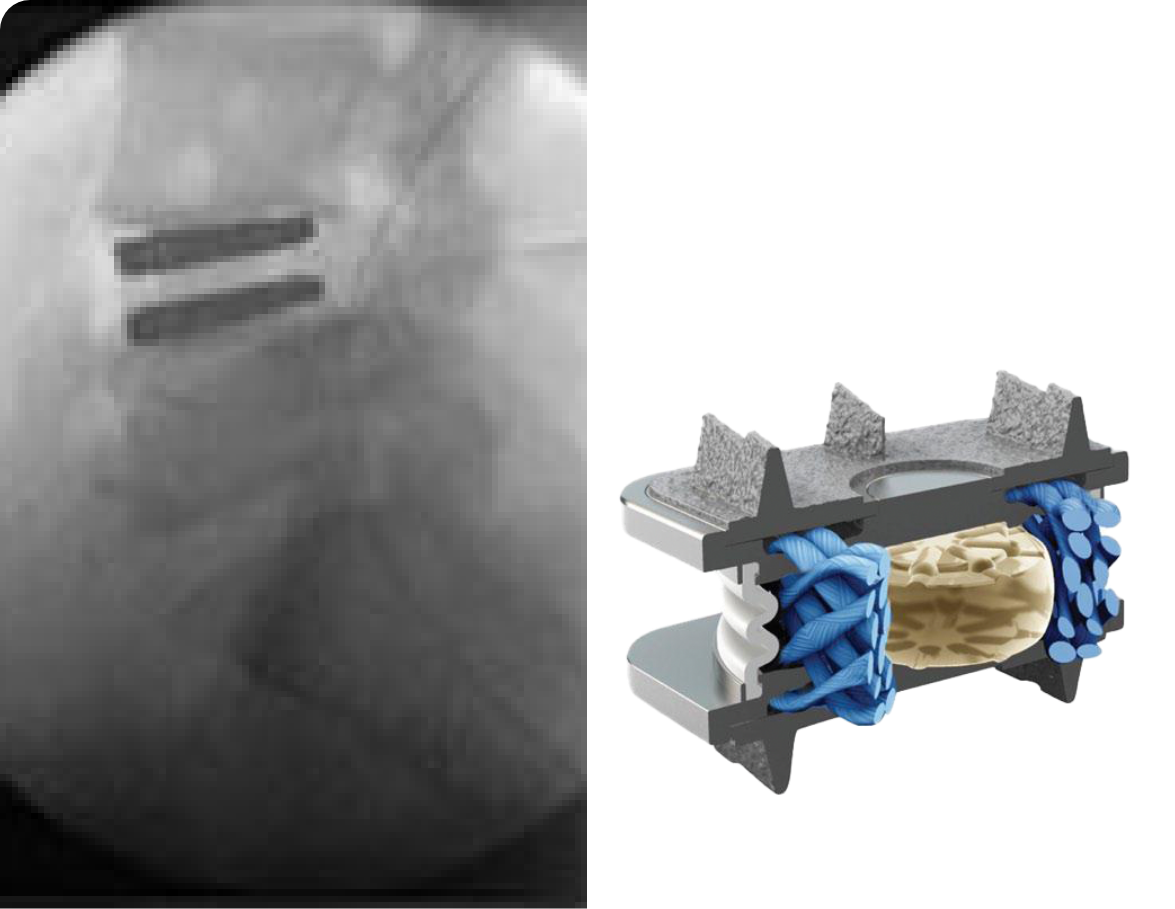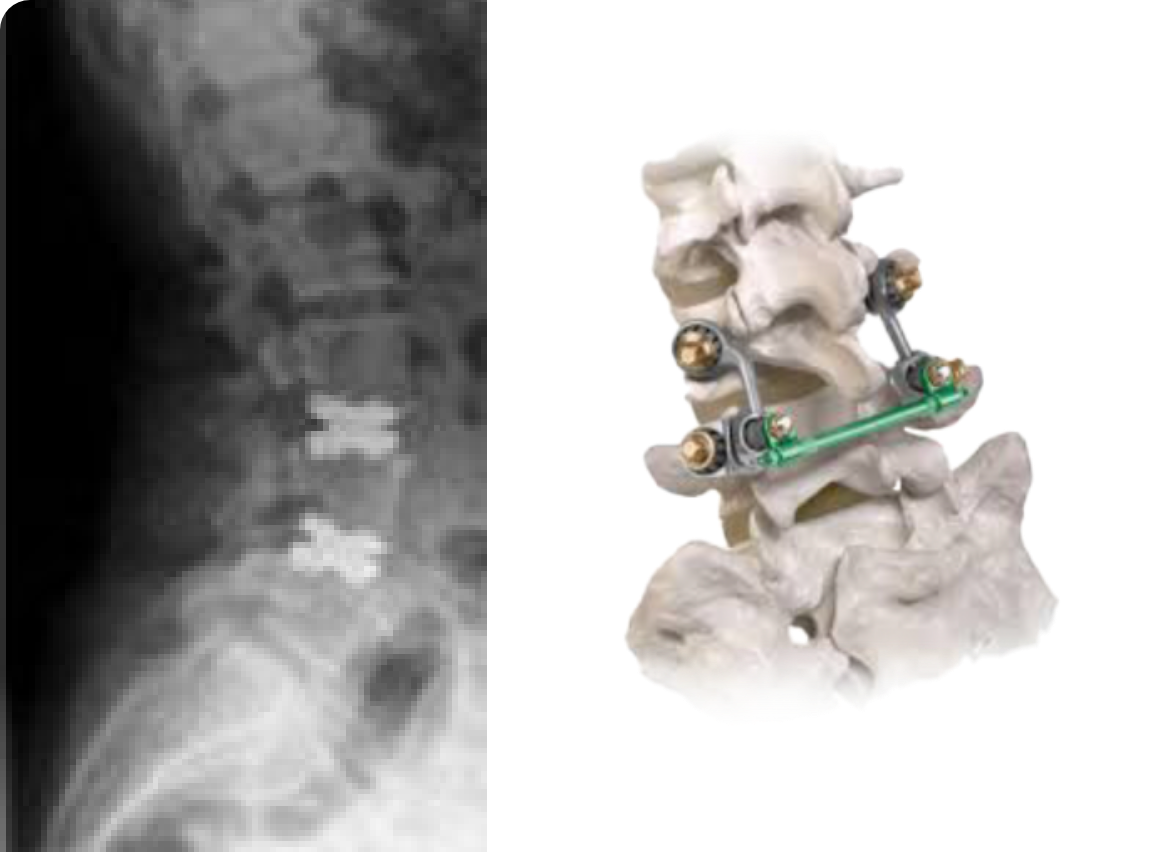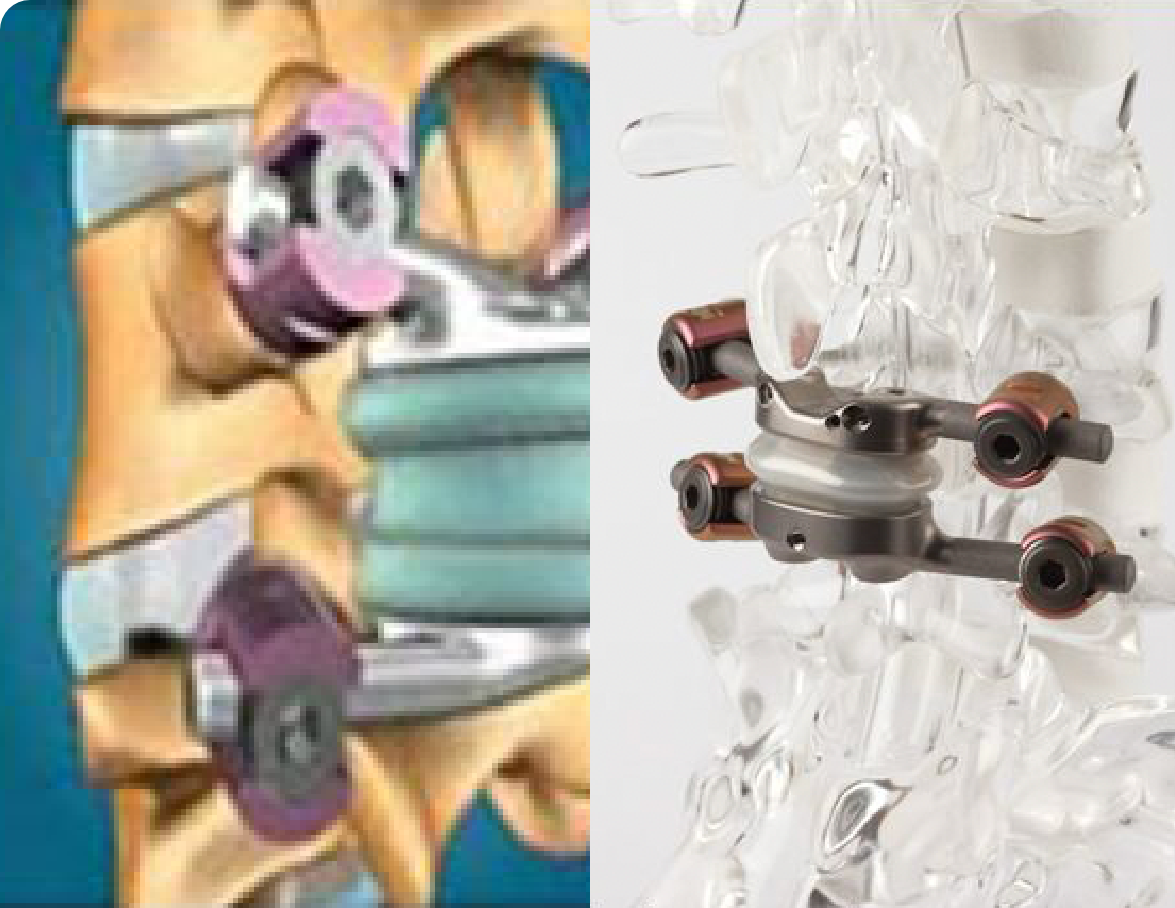Cutting edge spinal interventions.
Your lumbar solutions.
Decide with confidence.
5 questions you should ask.
Cervical motion preserving technology. Alternatives to spinal fusion.

M6 disc replacement L4/5

ONZ neurosurgeon Dr. Thomas Bierstedt about the M6-L.
According to our experience the clinical outcome with the M6 is superior to other implant types of previous implant generations. The M6 is designed to mimic a disc’s natural motion in a superior quality. Its features like restricted flexion and extension plus shock absorption (!) are significantly less stressful for facet joints and adjacent levels. Implant subsidence has dramatically decreased with the M6 compared to previous implant types like semi-constrained or ball-and-socket devices.
Post-surgical recuperation is shorter, patient satisfaction is higher.

Left: Implanted Triumph discs at L3/4 and L4/5
Right: Additional facet joint replacement with Acadia

ONZ neurosurgeon Dr. Bernd Illerhaus about the Triumph.
The Triumph artificial disc is a motion preserving posterior alternative for higher lumbar levels. Thus we can provide an excellent alternative to fusion in patients with degenerative disc disease (DDD) at L1-S1 and who are uneligible for an anterior approach due to previous abdominal surgeries, vascular diseases, and higher lumbar levels.

TOPS™ at L4/5

ONZ neurosurgeon Dr. Bernd Illerhaus about TOPS™.
Most people suffering from moderate to severe lumbar spinal stenosis (with or without spondylolisthesis) are being treated today with spinal fusion.
The TOPS™ System is an alternative to fusion surgery for patients suffering from moderate to severe lumbar spinal stenosis and/or spondylolisthesis.
The TOPS™ System is a mechanical device implanted by a posterior surgical approach which allows axial rotation, lateral bending, extension, and flexion.